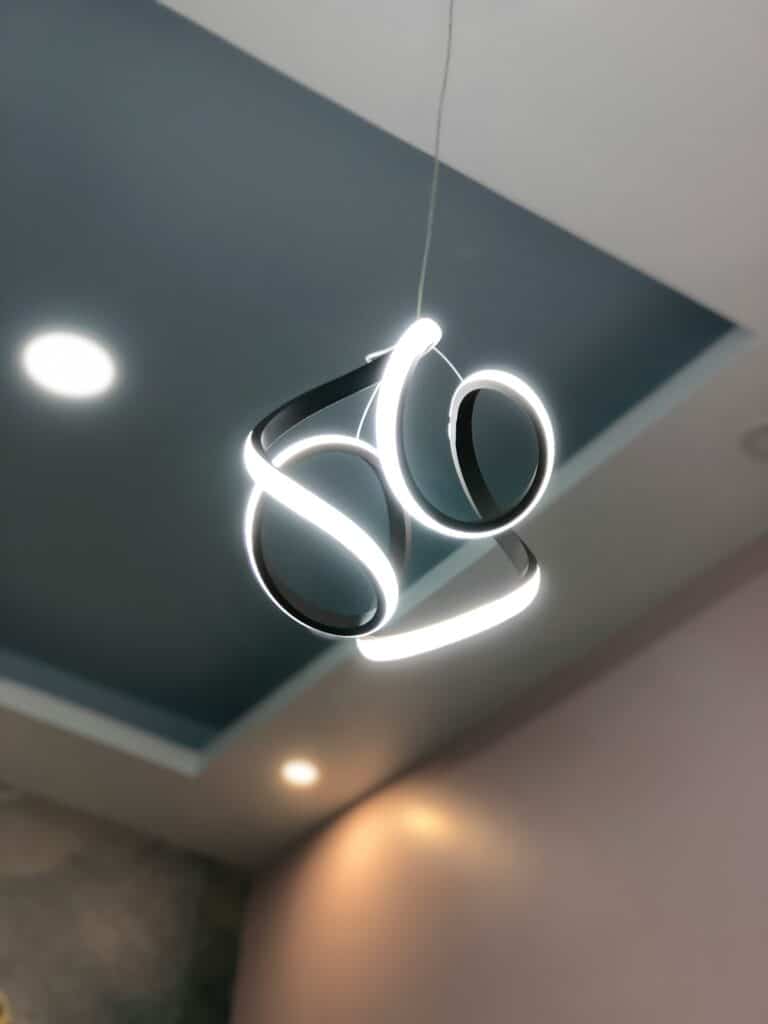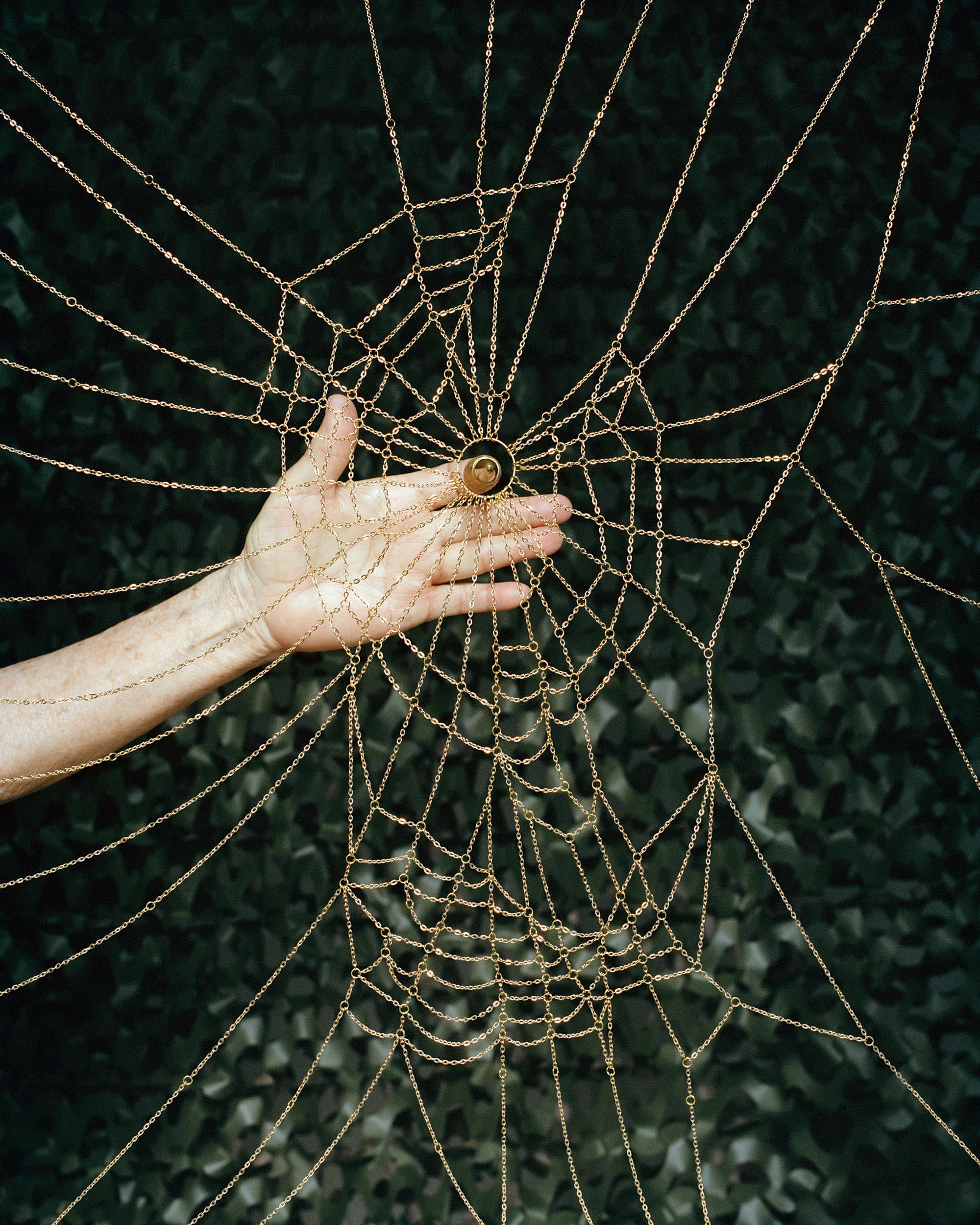Die einzige Konstante im Leben ist die Veränderung, aber diese 2024 Innenarchitektur Trends haben laut Designexperten und Fachleuten von Pinterest einen langen Atem - das ergab eine Umfrage unter den 482 Millionen Nutzern der Plattform. Wenn du im Laufe des Jahres Designaufträge übernimmst, solltest du in Erwägung ziehen, einige dieser Trends in den einzigartigen Räumen deiner Kunden umzusetzen.
Raus mit dem Alten, rein mit dem Neuen (und umgekehrt)
Genau wie die Kultur ist auch die Inneneinrichtung ein Spiegelbild verschiedener Teile der menschlichen Natur. Sie kann unserem Komfort einen Spiegel vorhalten - wie der "Velvet Everything"-Wahn im Jahr 2021 - oder uns unsere Sehnsüchte näher bringen - wie eine begehrte Ultrafragola aus der Mitte des Jahrhunderts. Das Schöne an der wandelbaren Natur der Inneneinrichtung ist, dass du deine Wohnung nicht auf den Kopf stellen musst, um sie neu zu gestalten. Ganz zu schweigen davon, dass wir alle eine Entrümpelung gebrauchen könnten, nachdem wir uns während der Pandemie aggressiv eingeschmuggelt haben. Neue Trends sind eine Chance, Platz für mehr von dem zu schaffen, was du liebst.
Trends schlagen hohe Wellen, während Modeerscheinungen Wellen schlagen
Wenn du durch die Gänge deines örtlichen Secondhand-Ladens schlenderst, stößt du oft auf kleine Friedhöfe vergangener Modetrends: ein Dutzend Lavalampen oder eine Wand mit Holzbildern, die zum Leben, Lachen und Lieben einladen. Im Gegensatz zu diesen Modeerscheinungen sind die Trends in dieser Liste Teil größerer kultureller Wellen, die im Jahr 2024 und darüber hinaus für Furore sorgen werden. Das bedeutet, dass du keine Angst haben solltest, auf diese Einrichtungstrends hereinzufallen, denn sie werden wahrscheinlich nicht so bald verschwinden.

Nachhaltiges Design
Die steigende Zahl umweltbewusster Einrichtungsmaterialien auf dem Markt ist ein Zeichen dafür, dass sich die Branche in Richtung Nachhaltigkeit bewegt, denn Designer entscheiden sich zunehmend für Materialien, die den Planeten schonen.
Verbrauchernachfrage treibt umweltbewusstes Angebot an
Die wachsende Bedeutung von umweltfreundlichen Materialien in der Inneneinrichtung ist eine Reaktion auf das kollektive Umweltbewusstsein, das eine Anziehungskraft auf nachhaltige Optionen ausübt. Da die Verbraucherinnen und Verbraucher ein Design fordern, das mit ihren Werten übereinstimmt, setzen Marken auf eine umweltfreundliche Auswahl an pflanzlichen, recycelten und gespendeten Materialien, die nicht nur den ökologischen Fußabdruck verringern, sondern auch die Ästhetik von Innenräumen verbessern.
Nachhaltige Praktiken über den gesamten Produktlebenszyklus
Von der bewussten Produktion bis hin zu kompostierbaren Verpackungen und der Weiterverwendung von Produkten erfährt die Innenarchitektur eine Anziehungskraft in Richtung umweltfreundlicher Materialien. Bei der Auswahl von Einrichtungsgegenständen werden immer mehr pflanzliche, kompostierbare, recycelte, fair gehandelte, kreislaufwirtschaftliche und sogar geshoppte Produkte zu sehen sein.
Umweltfreundliche Materialien und ihre Anwendungen
Im Zusammenhang mit der Innenraumgestaltung beziehen sich nachhaltige Materialien auf Oberflächen wie Bodenbeläge, Wände und Möbelbezüge. Was ein Material umweltfreundlich macht, ist in der Regel die Herkunft des Produkts oder wie leicht es recycelt oder demontiert werden kann, um den ökologischen Fußabdruck zu verringern.
Wusstest du zum Beispiel, dass Plastik hunderte von Jahren in unserem Ökosystem verbleibt? Bambus hingegen kann sich in der richtigen kompostierbaren Umgebung innerhalb von 4-6 Monaten zersetzen.
Andere nachhaltige Materialien, die du für eine umweltfreundliche Innenraumgestaltung in Betracht ziehen solltest, sind:
- Bodenbelag: Kork, Stein, wiederverwendetes Holz und Hanfbeton (Mischung aus Hanf und Beton)
- Textilien: Hanf, Leinen und Wolle
- Möbel: Weichholz, Bambus und Rattan
- Dekoration: Myzel, japanischer Shikkui-Putz (aus Seetangfasern)
Das Beste daran, dass nachhaltige Materialien im Trend liegen, ist, dass sie zu niedrigeren Preisen als je zuvor erhältlich sind, was sie für Innenarchitekten aller Erfahrungsstufen leichter zugänglich macht. Selbst kleine Entscheidungen für ein nachhaltiges Design können in der Summe einen großen Unterschied ausmachen.

Maximalismus
Dies ist das Jahr, in dem du alles rauslassen kannst. Denke an den eklektischen Zwilling von Marie Kondo: Beim Maximalismus geht es darum, jeden Winkel und jede Oberfläche zu nutzen, um dir Freude zu bereiten. Kräftige Farben und visueller Lärm vereinen ihre Kräfte, um das Chaos in der maximalistischen Inneneinrichtung willkommen zu heißen.
Eine Revolte gegen Regeln
Das Gegenteil von Maximalismus ist Minimalismus. Millennials kennen das nur zu gut: luftige Räume, gedeckte Farben und eine minimale Einrichtung. Diese Einrichtungswahl macht viel Sinn für eine Generation, die ihre Jugend in den senfgelben Zottelteppich-Kellern ihrer Eltern verbracht hat. Zum Glück ist es für Millennials noch nicht zu spät, die Freude am eklektischen Einrichtungsstil zu entdecken.
Mutige Entscheidungen und laute Muster
Cottagecore ist gegangen, damit der Maximalismus laufen kann. Fleißige Tapeten sind nicht nur willkommen, sie werden sogar ausdrücklich empfohlen. Wuschelige Ottomane? Ja, bitte! Der Maximalismus begrüßt kontrastreiche Farben und Muster mit bedingungsloser Liebe und zelebriert Arrangements, die so einzigartig sind wie die Menschen, die in ihnen leben. Einfach ausgedrückt: Diese Art der Inneneinrichtung bevorzugt das Gewagte.
Maximalistische Elemente in deinen Raum einbauen
Für den Maximalismus gibt es nur eine Regel: Es gibt keine Regeln. Aber wenn du etwas Hilfe brauchst, um die Zweideutigkeit zu akzeptieren, findest du hier einige Einrichtungselemente, die deinem Raum ein gemütliches, einzigartiges, maximalistisches Gefühl verleihen:
- Textur: Überlagere verschiedene Texturen, um einem Raum Tiefe und visuelles Gewicht zu verleihen
- Farbe: Wähle satte Farben wie Juwelentöne oder setze einen einzelnen Farbtupfer.
- Akzente: Mit geriffelten Texturen und geschwungenen Details können verschiedene Elemente miteinander verbunden werden
- Pflanzen, Porträts - oder beides: Pflanzen und Galeriewände sind zwei beliebte maximalistische Elemente, die dem kreativen Ausdruck freien Lauf lassen
Im Zweifelsfall schnappst du dir einen Freund und gehst zum nächsten Antiquitätenmarkt, um dich von der ersten Welle des Maximalismus in den 1980er Jahren inspirieren zu lassen.

Kurven und organische Formen
Die strengen, geraden Linien, die die Moderne der Mitte des Jahrhunderts dominieren, sind immer noch stark, aber sie werden auch mit organischen, unregelmäßigen Formen gemischt - und manchmal durch diese ersetzt - die ein Statement setzen.
Wechsel von harten Linien zu weichen, abgerundeten Kanten
Der Trend zu organischen Formen ist von der Natur inspiriert und greift Formen auf, die man in Gärten, Landschaften, Flüssen und Canyons findet. Dieser frei fließende Trend verleiht dem Raum eine entspannte Atmosphäre und ruft Wärme und Gemütlichkeit hervor.
Natürliche Formen in Möbeln und Dekoration einbeziehen
Du kannst diesen Trend nach Hause holen, indem du Formen und Muster aus der Natur in deine Inneneinrichtung einbeziehst. Unvollkommene Kurven, unregelmäßige Formen und der strategische Einsatz von Symmetrie und Asymmetrie sind einige der Elemente, die diesen Trend zum Leben erwecken. Bei den Accessoires können matte Oberflächen und handgefertigte Gegenstände dazu beitragen, diesem natürlichen Look Charakter zu verleihen. Während Dekorationen mit organischen Formen meist in neutralen Farben wie Beige, Creme und Lehm gehalten sind, können dunkles Holz, satte Grüntöne und Metallic-Elemente wie Spiegel diesem Trend Lebendigkeit verleihen.
Wie du geschwungene und organisch geformte Elemente in dein Design einbauen kannst
Im Kern geht es bei dem Trend zu weichen und organischen Formen darum, die Harmonie der Natur in unser Haus zu holen, um Gelassenheit in unser Zuhause zu bringen. Einige Einrichtungselemente, die dazu beitragen können, sind:
- Übergroße, organisch geformte Spiegel
- Geschwungene Holzmöbel, insbesondere solche, die das Muster der Maserung aufgreifen
- Runde oder geschwungene Sofas
- Jugendstil-Lampen
Die Beleuchtung sollte warm, weich und indirekt sein. Überlege dir, ob du im ganzen Raum Lampen aufstellst und die Deckenbeleuchtung ausschaltest, um eine stressreduzierte Atmosphäre zu schaffen.

Skulpturale Beleuchtungsarmaturen
Wenn 2023 das Jahr des Spiegels war, dann ist 2024 das Jahr der Beleuchtungskörper. Der Trend zu skulpturalen Beleuchtungskörpern für die Inneneinrichtung ist die Verbindung von Funktion und künstlerischem Ausdruck.
Warum schimmern, wenn du glänzen kannst
Während die Beleuchtung für die Funktionalität eines Hauses unerlässlich ist, zeigt dieser Trend, dass die Beleuchtung noch viel mehr für einen Raum tun kann. Wenn du schon Licht haben musst, warum soll es dann nicht auffallen? Wenn wir skulpturale Beleuchtungsstücke als Schmuckstücke der Innenarchitektur betrachten, dann können sie eines von zwei Dingen tun: entweder einen Raum zusammenhalten oder dir beim Betreten den Atem rauben.
Skulpturale Beleuchtungskörper sind auch ein künstlerisches Statement
Das Besondere an diesem Trend im Jahr 2024 ist, dass er sich nicht mehr nur auf Deckenleuchten wie Kronleuchter beschränkt - auch Tischlampen, Wandlampen und stimmungsvolle Wandbeleuchtung sind zur Party eingeladen, und sie sind beeindruckend gekleidet. Diese Veränderung bedeutet, dass praktisch jeder Raum im Haus mit einer Leuchte ausgestattet werden kann, die gleichzeitig ein auffälliges Kunstwerk ist.
Tipps für die Integration von dramatischer Beleuchtung in verschiedene Räume
Beleuchtung ist eine Kunst für sich. Um den gewünschten Effekt zu erzielen, solltest du dich von Beleuchtungsexperten in einem Geschäft vor Ort beraten lassen oder dir ein Video ansehen, in dem die Grundlagen der Beleuchtungstheorie erklärt werden, wenn du eine drastische Veränderung wie einen Kronleuchter in der Mitte des Raumes vorhast. Steh- und Tischlampen sind viel einfacher auszuprobieren, ohne sich zu verpflichten.
- Nutze den Kontrast. Wähle eine dunkle oder kontrastreiche Wandfarbe als Hintergrund, um deine skulpturale Deckenbeleuchtung hervorzuheben.
- Wähle eine Ära. Skulpturale Beleuchtung ist seit Jahrzehnten beliebt, vom klassischen Glamour des Art déco bis hin zu abstrakten Kreationen aus futuristischen Materialien - die Auswahl ist also praktisch grenzenlos.
- Akzentuieren. Mit den skulpturalen Wandleuchtern wird der Gang zum Laufsteg.
Eine weitere Möglichkeit für skulpturale Beleuchtung ist es, einen lokalen Kunsthandwerker zu beauftragen, der die Form aus für die Beleuchtung geeigneten Materialien herstellt. Auf diese Weise erhältst du genau das Aussehen, das du dir wünschst, und unterstützt gleichzeitig die lokale Wirtschaft.
Tech-integrierte Räume
Einer der am meisten erwarteten Einrichtungstrends in diesem Jahr ist der Aufstieg von technologieintegrierten Räumen. Bei diesem Einrichtungstrend werden Gadgets nahtlos in den Raum integriert, sodass du die volle Kontrolle über deine sensorische Umgebung hast.
Erreiche eine neue Ebene der Kontrolle über deine Domain
Auch wenn Jetpacks nicht das primäre Transportmittel sind, wie es unsere Vorgänger vorausgesagt haben, wird funktionale, intelligente Unterhaltungselektronik immer mehr zur alltäglichen Realität. Die Fortschritte im Bereich Internet-of-Things (IoT) bedeuten, dass Verbrauchertechnologien heute das Leben einfacher machen. Wenn schon nicht einfacher, so doch zumindest cooler; wer schon einmal das Gefühl hatte, seine Jalousien per Sprachbefehl zu schließen, kennt das Gefühl. Einfach ausgedrückt: Smart Home-Technologie ermöglicht es dir, deine Umgebung per Sprache, Smartphone oder KI zu steuern.
Integrierte Technologie kann die Funktionalität der Innenarchitektur verbessern
Erhöhter Komfort und Bequemlichkeit sind zwei der Hauptvorteile, die Menschen zu intelligenter Haustechnik bewegen. Die Technik kann deine Inneneinrichtung in vielerlei Hinsicht verbessern, zum Beispiel:
- Anpassungen: Dimmen der Beleuchtung auf die gewünschte Helligkeit, Farbe oder Tonspur
- Automatisierung: Jalousien so einstellen, dass sie sich morgens zu einer bestimmten Zeit öffnen
- Energieeinsparungen: Intelligente Technik lernt deine Gewohnheiten, um in der Freizeit Energie zu sparen
Ein intelligentes Zuhause ist nicht nur nützlich, sondern auch schick. Unternehmen, die intelligente Haustechnik anbieten, wissen, dass smarte Geräte Form und Funktion bieten müssen. Deshalb gibt es die neuesten Modelle oft in einer Vielzahl von Farben, die zu jeder Einrichtungspalette passen.
Überlegungen für ein nahtlos integriertes technisches Zuhause
Das Konzept eines technisch integrierten Hauses ist zwar aufregend, aber es gibt ein paar Dinge zu beachten. Erstens erfordert Technologie eine gewisse Lernkurve, und es kann einige Zeit dauern, bis das aufregende neue Spielzeug so funktioniert, wie du es möchtest. Zweitens werden viele smarte Geräte über das Smartphone bedient und sind so konzipiert, dass sie optimal mit bestimmten Geräten zusammenarbeiten.
Gegensätzliche Ansichten über technikintegrierte Räume
Ähnlich wie in der Modebranche gibt es auch bei den Trends in der Inneneinrichtung ein "beides ist wahr". Während viele Menschen immer noch nach Möglichkeiten suchen, hilfreiche Technologien in ihr Zuhause zu integrieren, gibt es auch immer mehr Menschen, die nach Räumen suchen, in denen sie sich ausklinken können. Diese Designer/innen und Hausbesitzer/innen besinnen sich auf ihre Liebe zu mechanischen Bedienelementen wie Knöpfen, Kippschaltern und anderen Gegenständen, die es ihnen ermöglichen, eine achtsame Routine ohne blaue Bildschirme und automatische Abläufe zu genießen.
Die diesjährigen Trends bieten das Potenzial für zeitlose Inspirationen und die Chance, nachhaltige Entscheidungen zu treffen, die kühne Welle des Maximalismus aufzugreifen, Räume mit organischen Formen zu mildern, mit skulpturalen Leuchten zu beleuchten und Technik nahtlos zu integrieren, um ein stilvoll vernetztes Zuhause zu schaffen. Wenn deine Inneneinrichtung im Jahr 2024 im Mittelpunkt steht, solltest du nicht nur den Trends folgen, sondern sie individuell gestalten. Ein Raum, der den Stil und die Vorlieben deiner Kunden widerspiegelt, wird sich noch mehr wie ein Zuhause anfühlen.













